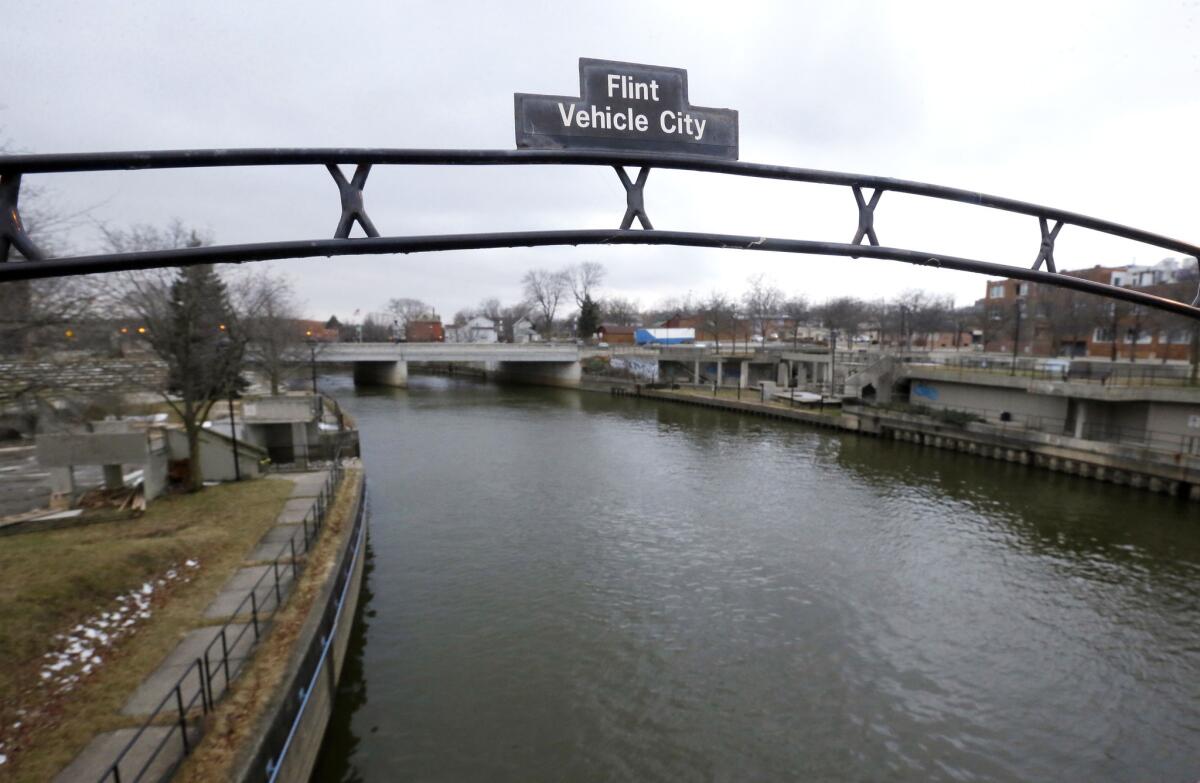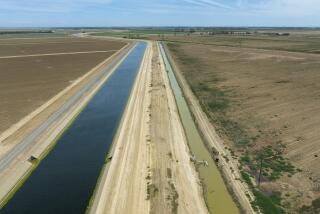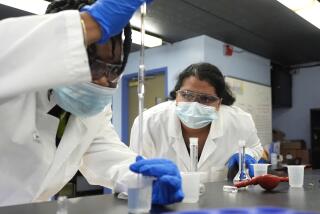Michigan officials were warned of link between Flint’s water and Legionnaires’ disease, emails show

A sign over the Flint River proclaims Flint, Mich., to be Vehicle City.
- Share via
Reporting from LANSING, Mich. — High-ranking officials in Michigan Gov. Rick Snyder’s administration were aware of a surge in Legionnaires’ disease potentially linked to Flint’s water long before the governor reported the increase to the public last month, internal emails show.
When he disclosed the rise in Legionnaires’ cases on Jan. 13, Snyder said he had learned about it just a couple of days earlier. But emails obtained by the liberal group Progress Michigan through public-records requests and shared with the Associated Press show that Snyder’s own office had been aware of the outbreak since last March. At the time, others in the administration were scrambling to respond to suggestions that bacteria in the city’s new water source, the Flint River, could be the culprit.
The outbreak was also well known within state agencies, according to emails obtained separately by the AP and other news organizations. Together, the emails offer more evidence that some state officials were dismissive of county health authorities who raised concerns about the safety of the community’s drinking water.
Join the conversation on Facebook >>
“The increase of the illnesses closely corresponds with the timeframe of the switch to the Flint River water. The majority of the cases reside or have an association with the city,” Jim Henry, Genesee County’s environmental health supervisor, wrote March 10 to Flint leaders, the city’s state-appointed emergency financial manager and the state Department of Environmental Quality, known as the DEQ.
“This situation has been explicitly explained to MDEQ and many of the city’s officials,” Henry said in the email that was forwarded by the DEQ to a Snyder aide three days later. “I want to make sure in writing that there are no misunderstandings regarding this significant and urgent public health issue.”
Legionnaires’ disease is a pneumonia caused by bacteria in the lungs. People get sick if they inhale mist or vapor from contaminated water systems, hot tubs or cooling systems.
There were at least 87 cases across Genesee County during a 17-month period, including nine deaths, but the public was never told about the increase when it was happening — even after an initial wave of more than 40 cases was known by early 2015.
The back and forth behind the scenes occurred while residents were complaining about poor water quality, even before lead contamination became an extraordinary health emergency roughly six months later.
The emails reveal tension between the county health department, which was on the front line of the Legionnaires’ outbreak, and the city and state about how to investigate the disease. The emails also show some angst in the Snyder administration over the controversy.
Brad Wurfel, who was DEQ spokesman at the time, informed Snyder’s director of urban initiatives, Harvey Hollins, about a “significant uptick” in Legionnaires’ cases but said it was “beyond irresponsible” for Henry to link the disease to the river without an adequate investigation. He copied then-DEQ Director Dan Wyant on the email.
Wurfel noted that the county had re-submitted an open-records request to the city for water testing results and other information because of what Henry called the city’s “lack of cooperation.”
Wurfel said it would be “highly unlikely” to find Legionella bacteria around the water treatment plant. However, he acknowledged the accusation about a link to the river was “serious” and said all agencies should come together “asap to share what information we have and develop a response/screening strategy before the weather gets warm again.”
Both Wyant and Wurfel resigned on Dec. 29.
Snyder spokesman Dave Murray, citing the large executive office staff, said this week that the Republican governor only learned about the Legionnaires’ outbreak days before he publicly disclosed it — despite Hollins being flagged 10 months earlier. Snyder’s former chief of staff, Dennis Muchmore, has said neither he nor Snyder knew but they should have been told earlier.
“Important information flow isn’t always forthcoming,” he told WKAR-TV in East Lansing, Mich., in mid-January.
Lonnie Scott, executive director of Progress Michigan, said the emails expose “another glaring example of Gov. Snyder saying one thing and emails really revealing something different.” The group, which has asked Snyder to release staff emails that are exempt from the Freedom of Information Act, is still reviewing thousands of pages of state emails related to Flint’s water.
On March 12, Stephen Busch, a DEQ district supervisor, wrote back to Henry and challenged his assertion that the DEQ had declined to meet since being initially informed in October 2014 about a rise in Legionnaires’ cases. Busch said the department never was asked for a meeting, but he agreed that a multiagency partnership would be beneficial moving forward.
“Conclusions that legionella is coming from the public water system without the presentation of any substantiating evidence from your epidemiologic investigation appears premature and prejudice toward that end,” Busch wrote.
Janet Stout, a Pittsburgh microbiologist and expert on Legionnaires’ disease who has researched links between Legionella bacteria and public water supplies, believes the Flint River caused an increase in Genesee County Legionnaires’ cases.
“The county was alerting and alarmed and seeking cooperation and help from outside agencies,” Stout told the AP. “What I read tells me they did not get much help for various reasons.”
The state Department of Health and Human Services had already begun assisting the county in the fall of 2014, and the Legionnaires’ investigation had become “very intensive” in early 2015, said Dr. Eden Wells, Michigan’s chief medical executive.
Because Legionnaries’ disease is not transferred person to person, efforts to fight it are focused on determining sources of infection and notifying doctors so they have the option of performing a special test, Wells said.
About half of the cases had an “association” with a Flint hospital in the two weeks prior to their illness, Wells said. In response, McLaren Hospital spent more than $300,000 on a water treatment system, banned showers and also turned to bottled water for patients.
The state said it cannot conclude that the Legionnaires’ surge is related to the water switch, nor can it rule it out, in part because of too few case specimens from patients.
The first wave of 45 cases was commonly known within the state health department, Wells said, but the agency did not take the information to the governor until confirming a second wave of 42 cases and analyzing them together.
ALSO
New skyscrapers vie for West Coast’s ‘tallest’ title
Prosecutor details how Virgina Tech students allegedly plotted stabbing of 13-year-old girl
Smirking pharma CEO Martin Shkreli leaves lawmakers infuriated after hourlong showing
More to Read
Sign up for Essential California
The most important California stories and recommendations in your inbox every morning.
You may occasionally receive promotional content from the Los Angeles Times.










